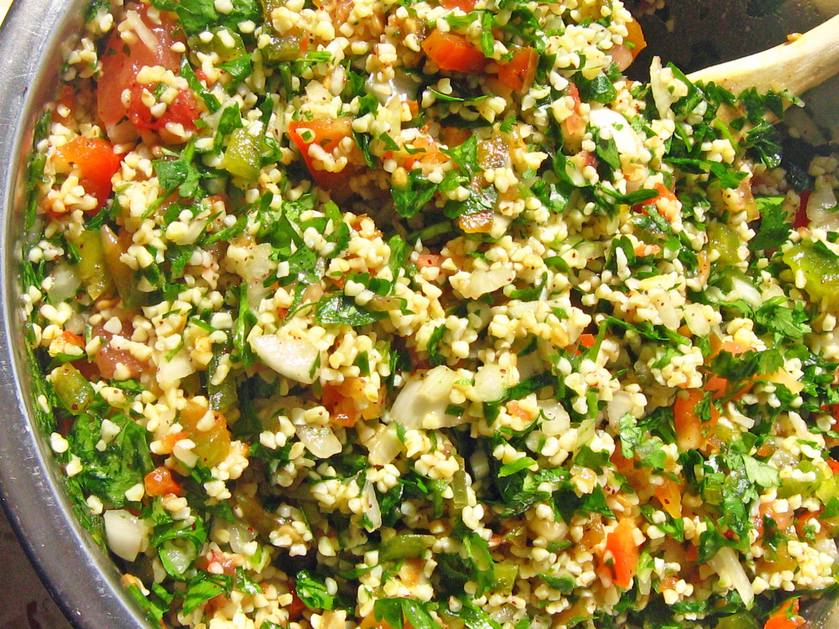
Tabbouleh is regarded as a main-dish salad for summer meals. But tabbouleh fits into chilly weather menus too. Cracked wheat, chopped vegetables and herbs bathed in olive oil and lemon juice – all that vitamin C. How can you go wrong? Not to mention that tabbouleh is delicious, inexpensive and colorful. A favorite with vegetarians. And takes very little effort to make.
There seems to be a difference of opinion as to the correct proportions of bulgur wheat to parsley in tabbouleh. Israelis like less bulgur, more parsley – and plenty of lemon. Westerners don’t enjoy so much herb in their tabbouleh, and favor a mellower dressing. American recipes sometimes include a cucumber. Some also add cumin to the salad.
Shall I confess the dreadful truth? I like to chop a little bell pepper into my tabbouleh, and favor the greater proportion of bulgur. I guess I haven’t lived in Israel long enough to change my errant ways.
By the way, cooked, firm quinoa makes a delicious tabbouleh.
Tabbouleh
PrintIngredients
- ¼ fine bulgur wheat
- 4 tomatoes
- 1 small onion
- 1 ½ cup parsley
- ½ cup fresh mint
- 6 tbsp olive oil
- Juice of 3 lemons
- Salt and pepper to taste
Instructions
- Soak the bulgur in hot water for 20 minutes. Drain excess water out and if need be, squeeze the mass between your palms to get as much moisture out as possible.
- Chop the parsley and mint as finely as you have patience to – or chop them up in the food processor. If you use the machine, watch it carefully so you don’t get green mush instead of chopped herbs.
- Chop the onion and the tomato.
- Add the herbs and vegetables to the tabbouleh, seasoning it with salt and pepper. Add the lemon juice and olive oil, again tasting and adding more if liked.
- It’s ready. Serve with yogurt or tahini, or both, on the side.
